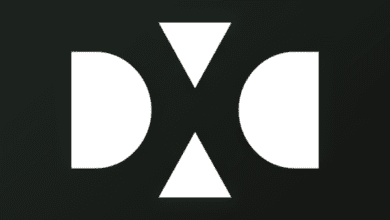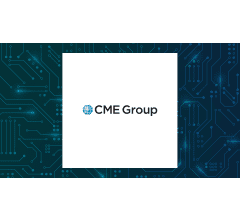Exclusive-Pioneer in the lithium industry, IBAT commercializes new extraction technology

By Ernest Scheyder
HOUSTON (Reuters) – In a milestone for the global transition to clean energy, International Battery Metals has become the first company to commercially produce lithium using a new type of filtration technology, a step that should usher in cheaper and faster supplies of the metal for electric vehicle batteries.
At a site in rural Utah controlled by private company US Magnesium, IBAT this week began producing commercial volumes of lithium at a rate of nearly 5,000 metric tons per year using its version of direct lithium extraction (DLE) technology.
The breakthrough had not been previously reported.
The company, which designed its DLE plant to be portable, essentially beat out Standard Lithium, SLB, Rio Tinto, Eramet and others to be the first to achieve that milestone. Investors, analysts and industry customers have waited years for commercial-grade production.
With DLE now proven at commercial scale, it is expected to grow within a decade into an industry with $10 billion in annual revenue, transforming the speed and efficiency of lithium production for electric vehicle makers and others, analysts said, in much the same way that fracking and horizontal drilling have helped boost U.S. oil production.
IBAT’s approach is based in part on technology developed by IBAT Chairman John Burba at Dow Chemical in the 1980s. “This is all about increasing the global supply of lithium,” Burba said. “We feel we have arrived at a critical juncture for this industry.”
The U.S. Geological Survey estimates that brine deposits in Europe, Asia, North America and elsewhere contain about 70 percent of the world’s reserves of the ultralight metal.
Lithium has historically been produced using evaporation ponds, which are used to extract the metal from these brines, or open-pit mines, which are used to remove it from hard rock deposits. The intensive water use and physical footprint of these methods, as well as their long development and production times, have prompted the search for a third option.
While DLE technologies vary, they are comparable to common household water softeners and aim to extract about 90% or more of the lithium from brines, compared to about 50% using lagoons.
Arcadium Lithium and a few others use DLE processes in conjunction with ponds, but no DLE technology has reached commercial production without them, generating competition to expand production to many parts of the world where occasional rainfall makes evaporation ponds impractical.
Many brine deposits have varying chemical compositions, meaning it’s unlikely that any single DLE technology — including IBAT’s — will emerge as a global standard, analysts said. Many Chinese deposits have high concentrations of magnesium, for example, and Bolivian deposits — among the world’s largest — have high levels of potassium.
Lithium has repeatedly proven difficult to separate from these and other metals often mixed with it in brines. This has puzzled many scientists working on DLE technologies for years. Lithium is also technically a salt and can be corrosive.
IBAT’s surge coincides with a more than 80% drop in lithium prices last year, fueling layoffs at industry leader Albemarle, newcomer DLE Lake Resources and others. Still, IBAT plans to build more of its plants and market them for use around the world.
STRATEGY
IBAT said the company was able to achieve commercial-scale production in part due to its relatively small plants.
While rivals have tried for more than a decade to commercialize DLE, their plans have involved production volumes of 20,000 tons a year or more at permanent facilities, often in remote regions where labor and supplies are hard to come by.
Houston-based IBAT designed and built a 450-foot-long portable plant in Louisiana that was moved in 13 pieces to the U.S. Magnesium facility, which extracts brine from the Great Salt Lake.
Additional plants can be added and stacked like Lego blocks to increase production in increments of 5,000 tons per year. It takes 18 months to build an IBAT plant and reach production, the company said.
Each plant, which is smaller than three acres (1.2 hectares), is designed to be moved to a new warehouse for reuse in the future, saving construction costs. IBAT plants cost $50 million to $60 million each, depending on several factors.
Paris-based Eramet has spent nearly $900 million on its own DLE project, which aims to come online this year in Argentina after more than a decade of development.
Ron Thayer, president of US Magnesium, said he chose the IBAT process because of its portability, as well as the type of adsorption material the IBAT process uses to filter lithium from brine, developed by Burba.
US Magnesium, which has begun selling lithium produced using IBAT’s technology and paying royalties to IBAT, considered several rival lawsuits, including one from Breakthrough Energy Ventures-backed Lilac Solutions, before deciding on IBAT, he added.
“I consider (IBAT) a commercial producer of lithium,” Thayer said.
Exxon Mobil, which is developing a lithium project in Arkansas, has considered using IBAT’s technology, Reuters reported.
The IBAT facility aims to recycle more than 98% of the water it uses. Burba has repeatedly flagged the lithium industry’s high water use as a structural impediment to DLE commercialization.
That recyclability is especially essential in Utah, where officials last year tightened regulations on extracting water from the Great Salt Lake, forcing Compass Minerals to abandon its lithium plans.
(Reporting by Ernest Scheyder; Editing by Veronica Brown and Rod Nickel)




